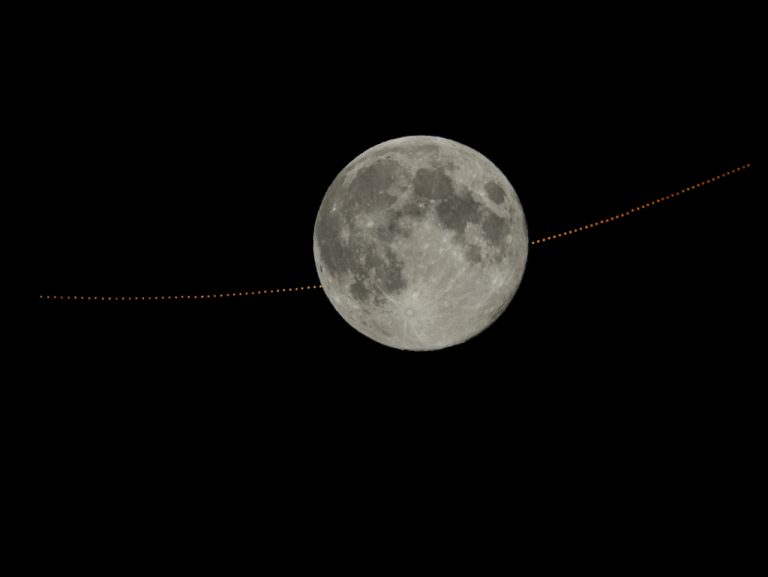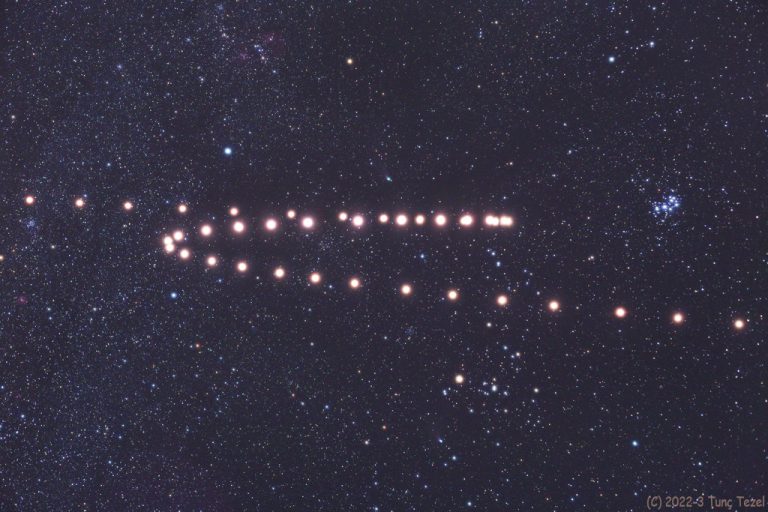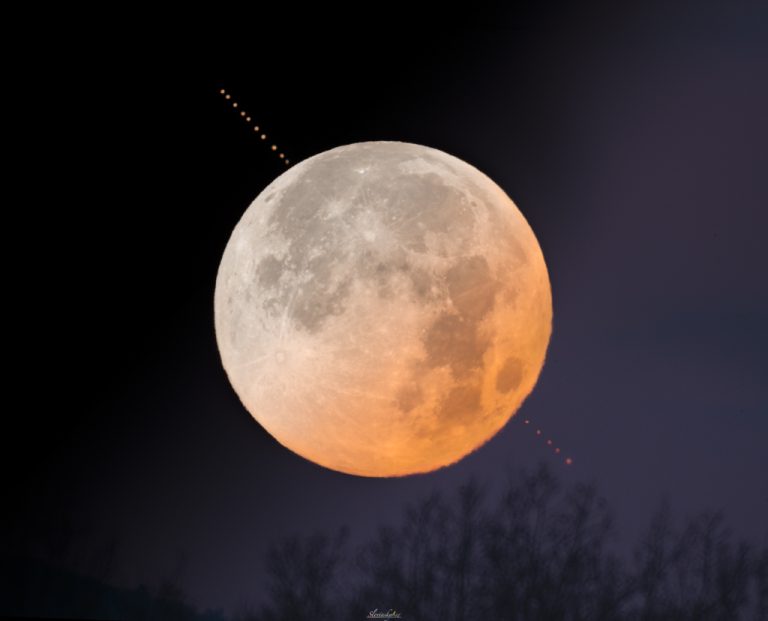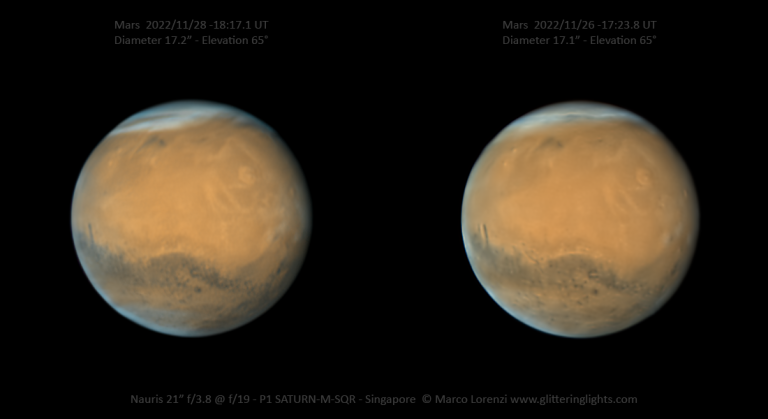火星伴月
See Explanation. Clicking on the picture will download the highest resolution version available.
请参阅说明。单击图片将下载可用的最高分辨率版本。

See Explanation. Clicking on the picture will download the highest resolution version available.
请参阅说明。单击图片将下载可用的最高分辨率版本。

See Explanation. Clicking on the picture will download the highest resolution version available.
请参阅说明。单击图片将下载可用的最高分辨率版本。

2023年11月24日 Stereo Jupiter near Opposition Image Credit & Copyright: Marco Lorenzi Explanation: Jupiter looks sharp in these two rooftop telescope images. Both were captured on November 17 from Singapore, planet Earth, about two weeks after Jupiter’s 2023 opposition. Climbing high in midnight skies the giant planet was a mere 33.4 light-minutes from Singapore. That’s about 4 astronomical units away. Jupiter’s planet girdling dark belts and light zones are visible in remarkable detail, along with the giant world’s whitish oval vortices. Its signature Great Red Spot is still prominent in the south. Jupiter rotates rapidly on its axis once every 10 hours. So, based on video frames taken only 15 minutes apart, these images form a stereo pair. Look at the center of the pair and…

2023年11月3日 Jupiter by Moonlight Image Credit & Copyright: Giorgia Hofer Explanation: That bright beacon you’ve seen rising in the east just after sunset is Jupiter. Climbing high in midnight skies, our Solar System’s ruling gas giant was at its 2023 opposition, opposite the Sun in planet Earth’s sky, on November 2. But only a few days earlier, on October 28, the Moon was at its own opposition. Then both Full Moon and Jupiter could share this telephoto field of view. The celestial scene is composed from two exposures, one long and one short, blended to record bright planet and even brighter Moon during that evening’s partial lunar eclipse. Moonlight shining through the thin, high clouds over northern Italy creates the colorful iridescence and lunar corona….

2023年8月25日 A Season of Saturn Image Credit & Copyright: Andy Casely Explanation: Ringed planet Saturn will be at its 2023 opposition, opposite the Sun in Earth’s skies, on August 27. While that puts the sixth planet from the Sun at its brightest and well-placed for viewing, its beautiful ring system isn’t visible to the unaided eye. Still, this sequence of telescopic images taken a year apart over the last six years follows both Saturn and rings as seen from inner planet Earth. The gas giant’s ring plane tilts from most open in 2018 to approaching edge-on in 2023 (top to bottom). That’s summer to nearly the autumn equinox for Saturn’s northern hemisphere. In the sharp planetary portraits, Saturn’s northern hexagon and a large storm system…

2023年4月15日 When Z is for Mars Image Credit & Copyright: Tunc Tezel (TWAN) Explanation: A composite of images captured about a week apart from mid August 2022 through late March 2023, this series traces the retrograde motion of ruddy-colored Mars. Progressing from lower right to upper left Mars makes a Z-shaped path as it wanders past the Pleiades and Hyades star clusters, through the constellation Taurus in planet Earth’s night sky. Seen about every two years, Mars doesn’t actually reverse the direction of its orbit to trace out the Z-shape though. Instead, the apparent backwards or retrograde motion with respect to the background stars is a reflection of the orbital motion of Earth itself. Retrograde motion can be seen each time Earth overtakes and laps…

2022年12月15日 Full Moon, Full Mars Image Credit & Copyright: Tomas Slovinsky Explanation: On December 8 a full Moon and a full Mars were close, both bright and opposite the Sun in planet Earth’s sky. In fact Mars was occulted, passing behind the Moon when viewed from some locations across Europe and North America. Seen from the city of Kosice in eastern Slovakia, the lunar occultation of Mars happened just before sunrise. The tantalizing spectacle was recorded in this telescopic timelapse sequence of exposures. It took about an hour for the Red Planet to disappear behind the lunar disk and then reappear as a warm-hued full Moon, the last full Moon of 2022, sank toward the western horizon. The next lunar occultation of bright planet Mars…

2022年12月9日 Mars Rises above the Lunar Limb Image Credit & Copyright: Tom Glenn Explanation: On the night of December 7 Mars wandered near the Full Moon. In fact the Red Planet was occulted, passing behind the Moon, when viewed from locations across Europe and North America. About an hour after disappearing behind the lunar disk Mars reappears in this stack of sharp video frames captured from San Diego, planet Earth. With the Moon in the foreground Mars was a mere 82 million kilometers distant, near its own opposition. Full Moon and full Mars were bright enough provide the spectacular image with no exposure adjustments necessary. In the image Mars appears to rise just over ancient, dark-floored, lunar crater Abel very close to the southeastern edge…

2022年12月3日 Stereo Mars near Opposition Image Credit & Copyright: Marco Lorenzi Explanation: Mars looks sharp in these two rooftop telescope views captured in late November from Singapore, planet Earth. At the time, Mars was about 82 million kilometers from Singapore and approaching its opposition, opposite the Sun in planet Earth’s sky on December 8. Olympus Mons, largest of the volcanoes in the Tharsis Montes region (and largest known volcano in the Solar System), is near Mars’ western limb. In both the images it’s the whitish donut-shape at the upper right. The dark area visible near center is the Terra Sirenum region while the long dark peninsula closest to the planet’s eastern limb is Sinus Gomer. Near its tip is Gale crater, the Curiosity rover’s landing…

2022年10月7日 In Ganymede’s Shadow Image Credit & Copyright: Andrew McCarthy Explanation: At opposition, opposite the Sun in Earth’s sky, late last month Jupiter is also approaching perihelion, the closest point to the Sun in its elliptical orbit, early next year. That makes Jupiter exceptionally close to our fair planet, currently resulting in excellent views of the Solar System’s ruling gas giant. On September 27, this sharp image of Jupiter was recorded with a small telescope from a backyard in Florence, Arizona. The stacked video frames reveal the massive world bounded by planet girdling winds. Dark belts and light zones span the gas giant, along with rotating oval storms and its signature Great Red Spot. Galilean moon Ganymede is below and right in the frame. The…